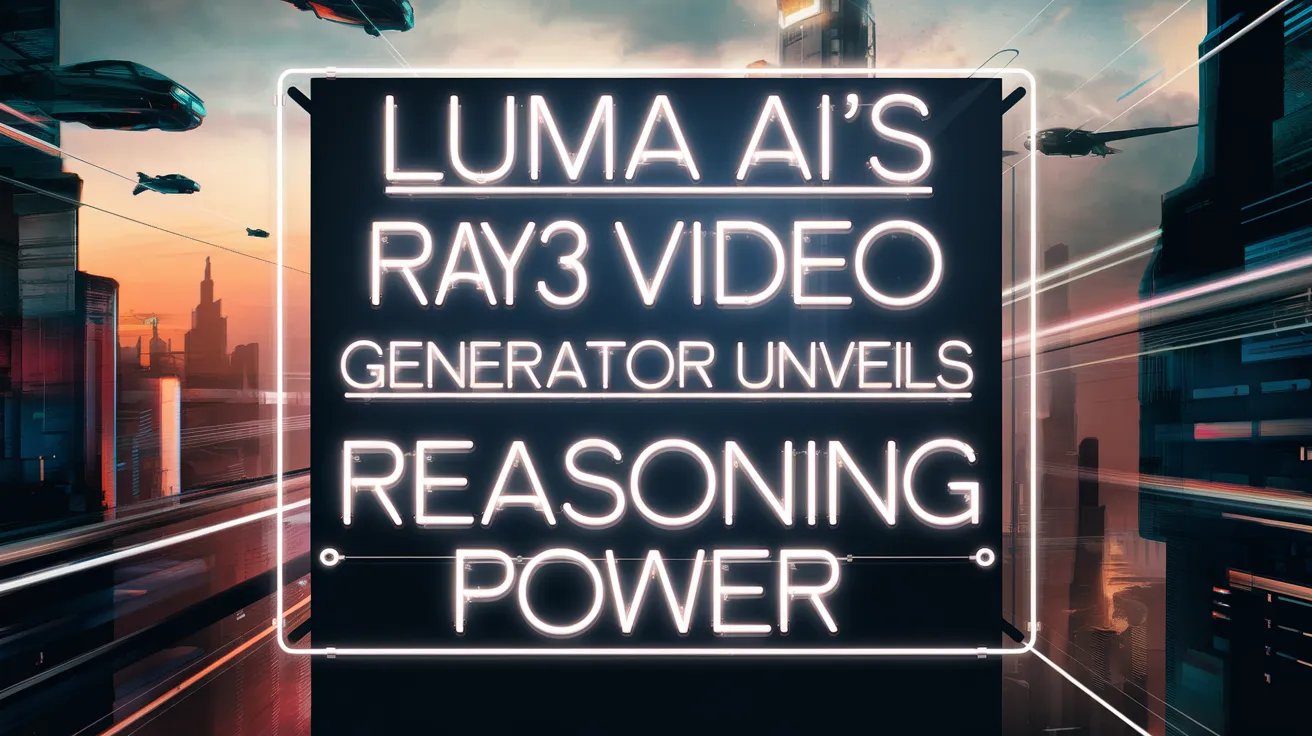Luma AI’s Ray3 Video Generator Unveils Reasoning Power

Luma AI has officially launched its first reasoning video model, Ray3, which promises to revolutionize video generation by allowing the AI to evaluate and refine its outputs. This innovative capability is part of a growing trend among AI companies, with major players like OpenAI and Google already utilizing reasoning models in their systems.
Reasoning models are designed to spend additional computing time to ensure the accuracy and quality of responses. In the case of Ray3, this translates into video clips capable of embodying more complex action sequences, which has traditionally presented a challenge for AI-generated content. While usual AI video clips last between 5 to 10 seconds, longer clips often suffer from inaccuracies—however, Ray3’s enhanced processing power helps mitigate these errors, offering a more polished output.
Luma AI’s CEO, Amit Jain, emphasized that the reasoning capabilities of Ray3 extend beyond simple text-to-video translations. He stated that the model can critically assess its work, identifying areas needing improvement. This self-evaluation feature not only enhances the creative process but also aids users in understanding how the model constructs its content with a new visual annotation tool. This tool allows creators to see what the model is doing, from making modifications to specific characters to adjusting frames, thereby fostering a more interactive experience.
Additional features in Ray3 include the capability to produce 16-bit HDR video, which enhances clarity and detail tremendously. Users can also utilize a new draft mode for quick testing of ideas, generating initial clips in about 20 seconds, which can later be refined and upscaled to high fidelity within a few minutes. This streamlined approach could significantly benefit content creators seeking efficiency without sacrificing quality.
The use of generative AI in video creation has seen exponential growth, with numerous tech giants introducing their models within the past year. This competitive landscape includes offerings from Midjourney and Google’s Veo 3, which are also designed to elevate content creation standards. Despite the advances, professionals in the industry have raised concerns regarding the ethical implications of deploying AI in media, particularly amidst ongoing class action lawsuits from artists against AI firms regarding the use of their work in training datasets. Luma AI’s privacy policy further indicates that user inputs may be used to enhance its service, sparking a conversation about data rights in the AI sphere.
As Ray3 launches, it presents both opportunities and challenges within the creative domain, marking a significant step towards refined AI-generated video content.